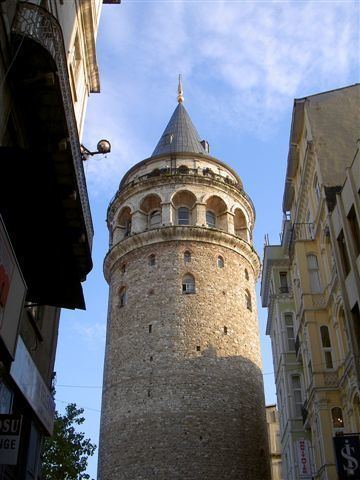 | ||
Levantines or Franco-Levantines (Arabic: شوام; French: Levantins; Italian: Levantini; Greek: Φραγκολεβαντίνοι Frankolevantini; Turkish: Levantenler or Tatlısu Frenkleri) are Latin Catholics of the Catholic Church who descend from Catholics who lived under the Ottoman Empire, including modern Levant (Syria, Lebanon, Israel, Palestine, Jordan) and Turkey.
Contents
Characteristics
Levantines were mostly of Italian (especially Venetian and Genoese), French, or other Euro-Mediterranean origin. They have been living in the eastern Mediterranean coast of Lebanon and Syria since the middle Byzantine or the Ottoman era and in Constantinople (Istanbul), Smyrna (Izmir) and other parts of Anatolia (such as the port towns of Amasra, Sinop, Trabzon, Enez, Foça, Çeşme, Bodrum, Alanya, Mersin, Iskenderun, etc., where the colonies of Genoese and Venetian merchants existed) in present-day Turkey.
The majority are either the descendants of traders from the maritime republics of Venice, Genoa, Pisa, Ancona and Ragusa who had colonies in the East Mediterranean coast; or the descendants of the French/Italian Levantines who lived in the Crusader states of the Levant (in present-day Lebanon, Israel and Syria), especially in port towns such as Beirut, Tripoli, Tyre, Byblos, Acre, Jaffa, Latakia, etc.; or in major cities near the coast, such as Tarsus, Antioch, Jerusalem, etc. Others may be converts to Roman Catholicism, immigrants from Anglo-French colonization, or Eastern Christians who had resided there for centuries.
Italian Levantines
The name Italo-Levantine is specifically applied to people of Italian (especially Venetian or Genoese) origin, but even with some French or other Euro-Mediterranean roots, who have lived in Istanbul, İzmir and other parts of Anatolia in Turkey. Some of the Italian Levantines may have ancestral origins also in the eastern Mediterranean coast (the Levant, particularly in present-day Lebanon and Israel) dating back to the period of the Crusades and the Byzantine Empire. A small group came from Crimea and from the Genoese colonies in the Black Sea, after the Fall of Constantinople in 1453.
The majority of the Levantines in modern Turkey are the descendants of traders/colonists from the Italian maritime republics of the Mediterranean (especially Genoa and Venice) and France, who obtained special rights and privileges called the Capitulations from the Ottoman sultans in the 16th century.
There are two large communities of Italian Levantines: one in Istanbul and the other in Izmir. At the end of the 19th century there were nearly 6,000 Levantines of Italian roots in Izmir. They came mainly from the nearby Genoese island of Chios in the Aegean Sea.
The community had more than 15,000 members during Atatürk's presidency in the 1920s and 1930s, but today is reduced to only a few hundreds, according to Italian Levantine writer Giovanni Scognamillo.
They continue to live in Istanbul (mostly in the districts of Karaköy, Beyoğlu and Nişantaşı), and Izmir (mostly in the districts of Karşıyaka, Bornova and Buca.)
Most Latin rite Catholics in Turkey are Levantines of mainly Italian background. The largest Catholic church in Turkey is the Church of St. Anthony of Padua on İstiklal Avenue in the Beyoğlu (Pera) district of Istanbul, which was constructed between 1906 and 1912 by the Italian Levantine community.
They have been influential in creating and reviving a tradition of opera. Famous people of the present-day Levantine community in Turkey include Maria Rita Epik, Franco-Levantine Caroline Giraud Koç and Italo-Levantine Giovanni Scognamillo. Most of Turkey's small Roman Catholic community are Levantines.
Notable people
Famous people of the present-day Italian Levantine community in Turkey include:
In the Levant
When the United Kingdom took over the southern portion of Ottoman Syria in the aftermath of the First World War, some of the new rulers adapted the term "Levantine" pejoratively to refer to the inhabitants of mixed Arab and European descent in Lebanon, Syria and Palestine, and to Europeans (usually French, Italian or Greek) who had assimilated and adopted local dress and customs. Today, a small percentage of Lebanon's small group of Latin Catholics are of at least partial French/Italian descent.
